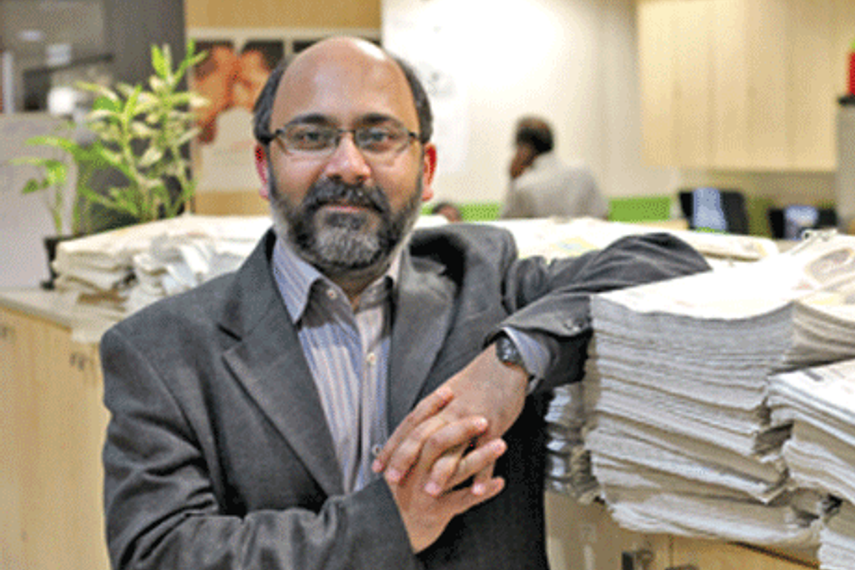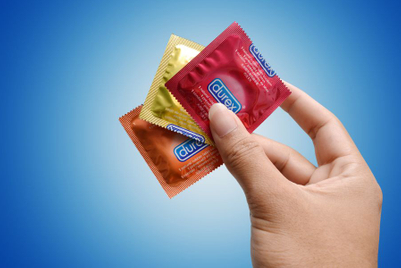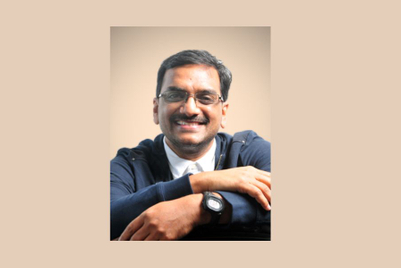
The queues of people waiting outside Jehangir Art Gallery in Mumbai for the heritage crawl bus tours on Hindustan Times’ (HT) No TV Day on January 29 would have made Shantanu Bhanja a satisfied man. The fact that the initiative did make an impression in the minds of people is, in a way, one of the reasons he switched from a 16-year long career of selling FMCG products at Reckitt Benckiser, to a job where he felt he could touch people’s lives.
The other reason was, simply, the challenge of getting into the battle between what Bhanja terms as the “Coca-Cola and Pepsi of Indian media”. The various job roles Bhanja took on at his long journey at Reckitt Benckiser, which included brand launches of Lizol and Vanish in India, overseeing Dettol globally and launching it in Portugal, seem to have equipped him for the challenge he was to take up in 2007 as the head of marketing at Hindustan Times. He said, “When I went to the UK, Dettol was almost a dying brand, and today it’s the largest growth driver of the business there. We strengthened and rejuvenated the brand and that absolutely taught me a lesson that if you have a brand that has strong credibility and heritage, it really depends on how much you can do with it, to activate it and connect with the people. Because the one thing you cannot suddenly buy is trust and heritage, and that’s something which, like Dettol, HT also had. What it did not have was a contemporariness and freshness and that’s really what was needed to be injected into the brand. The fact that it was an underdog in Delhi [to The Times of India] at that time was the challenge I bought into.”
The relaunch of HT in 2009 was one of the measures that helped bring in that turnaround. “We had just rolled out in 2007 (and I won’t take credit for that) a huge needs gap exercise of the Indian consumer. What that pointed to in a large measure led to the insights for our relaunch – where we said that it isn’t about yesterday’s news (which was already on TV and the Internet), but the larger view where we explain, this is what is happening and this is what it means for you,” Bhanja said. “For instance, I believe we have outstanding coverage of the budget every year, and of the elections in 2009 where we did something called the India Yatra.”
The ‘It is time’ advertising campaign by Lowe Lintas also helped to inform the reader about the change. “It actually came out and stood for an attitude that we as a paper will have, that we wanted readers to subscribe to,” said the marketing man.
It’s an interesting time to be in the newspaper industry, with the way the reader is going to access news evolving. Bhanja explained, “While HT in print is having a fantastic run, the newspaper tomorrow may or may not be in the format of a few pages of paper. It’s important that you don’t think of yourself as just a newspaper but a credible source of information and news. That’s why we’re the first newspaper on the Kindle and the iPhone; we were the first to strongly exploit Twitter and Facebook, and the first newspaper in the country where all the editors actively started blogging on the HT Blogs platform.” There’s also the tricky “paywall” bit. Bhanja responded, “At some point of time, the Indian reader will be willing to pay in some formats. The iPad reader we believe might be ready to pay not large amounts of money, but some amount of money. But no one in the world really knows it fully; people like The Wall Street Journal are trying it as we speak, some of them are succeeding well. As we go forward, we will look at creating special content for iPads, tablets in general, and online consumption.”
The newspaper is #1 in Delhi and #2 in Mumbai now, but this is no time to rest on laurels. Bhanja said, “Very silently, over the last year, we have rolled out strong editions across all the big cities of Punjab, and in key markets of Uttar Pradesh. We’re the first paper to have created an entertainment and lifestyle supplement that comes out every day with the paper across markets. In all these cities we’re creating a strong English readership base. Then, in Delhi, we launched a youth paper six months ago called HT Edge. It’s a 12-page newspaper with relevant news selected after endless interactions with youngsters in the age group of 18-25 years, people who haven’t seen a newspaper as a daily necessity. It has a lot more content on sports, international news, entertainment, careers, and jobs.”
The local initiatives which began with the ‘Mumbai First’ and ‘Delhi First’ series last year will also continue. “We believe that a lot of initiatives need to be done with sensitivity for the local people,” he said. “We have done the ‘I love Delhi’ series in the past, and we’re rolling out the Delhi Shopping Festival from the end of February. We’re also going to partner with WWF for Earth Hour.”
In all of this, how important is marketing for a newspaper today? Bhanja said, “We see marketing and editorial as a completely integrated piece of the essence of the company. In a lot of our programmes, like No TV Day, they’re conceived and taken forward jointly with editorial. There are obviously challenges at times, but it’s a fantastic relationship because it’s seldom adversarial as we know we’re both trying to service the same reader.” And how much is the marketing of newspapers like the marketing of FMCG products? “Fundamentally, marketing at its very core is really the same - it starts with figuring out fundamental consumer insights, is driven by innovation and product delivery to address those, and communicating those in exciting and endearing ways to build empathy and buzz for the brand. That remains the same, whether one is marketing Dettol or Vanish, or indeed building readership for the Hindustan Times,” he answered.
The Lowdown
2007 Vice president - marketing at Hindustan Times Media Ltd.
2005 Marketing director at Reckitt Benckiser, Portugal
2001 Global brand marketing manager, innovation and Dettol at Reckitt Benckiser PLC, corporate HQ, UK
1999 Marketing manager at Reckitt Benckiser India Ltd
1992 Various roles in marketing, Planning and sales at Reckitt & Colman India


.jpg&h=268&w=401&q=100&v=20250320&c=1)



.png&h=268&w=401&q=100&v=20250320&c=1)



